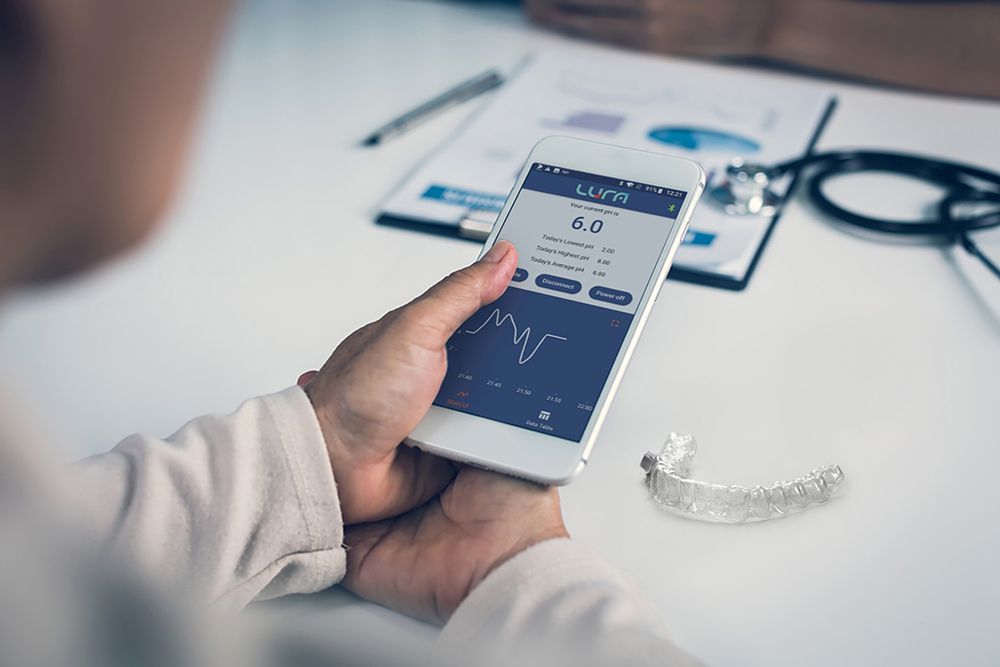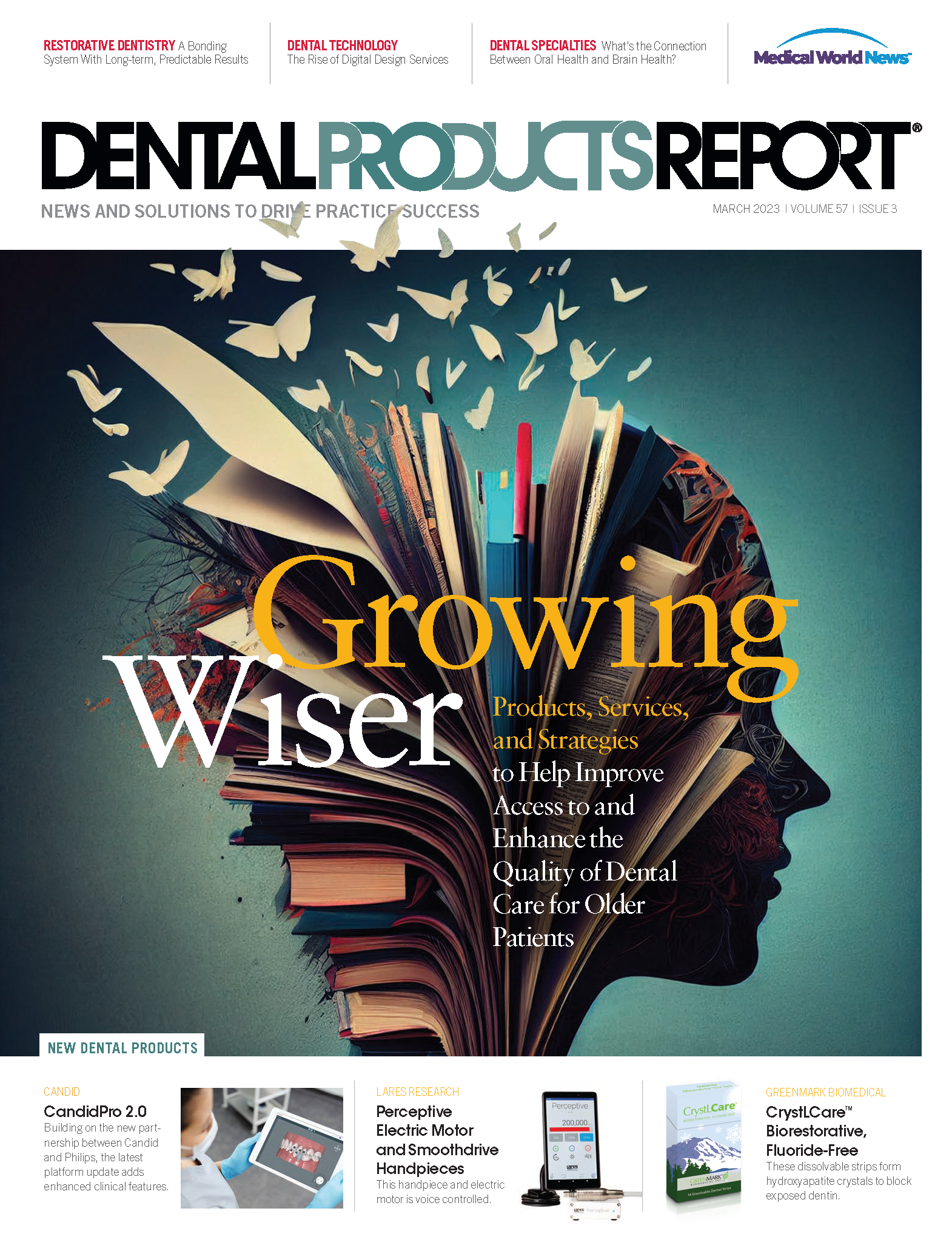A Promising Bluetooth-Enabled Salivary Diagnostic Sensor
The Lura Health sensor is designed to enable dentists to take a more central part in collaboration with medical doctors regarding oral-systemic health links.

If you are hungry for practice-changing technology, here’s a product that will have you salivating over its capabilities and amazing health implications. The cofounders of Lura Health have spent the past 4 years creating and miniaturizing an incredible device—a Bluetooth-enabled salivary diagnostic sensor. This tiny sensor can be embedded into orthodontic appliances, such as aligners, retainers, bands, and brackets, and it can track pH levels and other body chemicals that affect oral and medical health—even aligner-wear adherence. All the information is easily accessible to the patient and dentists via a companion mobile app. I sat down with Daniel Weinstein, CEO and cofounder of Lura Health, to find out what this evolving technology will mean for dentistry and medicine.
Lou Shuman (LS): Tell us about yourself and how you connected to dentistry.
Daniel Weinstein (DW): I have always been passionate about finding a better way to manage disease and improve health outcomes with technology. Lura Health started when I was studying biomedical engineering at Tufts [University]. I already had experience in certain areas of biomedical engineering from drug development at the Dana-Farber Cancer Institute to stem cell development. Although at that time I didn’t think I would be involved in dentistry, there has always been a connection—my grandfather and 2 of my uncles are dentists. As a child, I was always brought to the Yankee Dental [Congress] conference in Boston, [Massachusetts]. This year, Lura Health will have a booth at the Yankee conference, so going in this direction has brought me full circle.
LS: What about your cofounders?
DW: I met my 2 cofounders at an entrepreneurial event at Tufts—Noah Hill, [who was] a computer science engineer [and is now the chief technology officer], and Saam Bozorg, who was studying for his [doctor of dental medicine] at Tufts [University School of] Dental [Medicine and is now the chief medical officer]. We were fascinated by this idea of using saliva as an alternative to blood testing. To make testing easier and in real-time, we wanted to make something similar to the concept of a Fitbit for the mouth. Saliva is a rich diagnostic fluid and [is] concentration based, so it correlates to overall health in [several] other areas. [Today, saliva is] already used to detect more than 1000 health conditions. It is measured by somebody drooling into a tube and sending a sample to a lab or testing with a kit—that’s just a 1-time sampling.
Saam had a eureka moment when he realized that everything in his preventive dentistry education centered around acidity monitoring—acid demineralizes and eats through teeth, causing irreversible damage. If demineralization can be detected, monitored, and prevented at its earliest stages through pH detection, it’s possible to avoid damage. Patients can receive preventive alerts and dentists can access information from feedback on their app.
LS: How will the sensor be used in the mouth?
DW: Our first protocols will be to embed a sensor in aligners and retainers, because aligners are easily removable for eating, drinking, and brushing. For [patients] who don’t need any kind of aligner, the device can be integrated into a small pad and cemented onto a tooth just like an orthodontic bracket or band.
With aligners, we want to be a “white label solution”. This would mean that top aligner companies would integrate our sensors into their products, transforming them into wearable health-monitoring solutions. The branding and distribution would remain with the company, whether through the mail or strongly rooted in clinical care at the office. No matter how patients currently get their aligners/retainers, they can elect to include a smart device.
LS: What do [these] data mean [for] patient care?
DW: The implications of integrating this sensor into devices that dentists already prescribe are huge. Some reports show [that] approximately half of implants, crowns, and other restoratives fail because of poor oral hygiene. Imagine if you could monitor the health of an implant by monitoring the patient’s hygiene data. By being able to receive real-time health alerts, patients can quickly be proactive and correct any imbalance while [also] feeling that they have an important role in protecting their often expensive investment.
In time, dentists will be able to play a bigger part in collaboration with medical doctors regarding oral-systemic health links by monitoring saliva with an oral appliance like never before.
LS: What does the future hold?
DW: There are so many markers in the oral cavity associated with disease detection that are already clearly detected in saliva diagnostic testing. We can potentially add markers to indicate periodontal disease, inflammation, caries, biofilm, or even oral cancers—so many oral health-related indicators.
The applications in dentistry are only the beginning. Instead of blood testing, in the future, markers can target indicators [such as] glucose for diabetes, sodium and potassium for hypertension, heart disease, and kidney disease. Ultimately, the really long-term vision is to measure factors [such as] viral load, allergies, hormones, and drug adherence with a wearable bracket so you can get real-time continual feedback and health alerts at the earliest signs of potential harm and share that with the doctor. This is constant real-time continual health data, not drooling into a tube and waiting for results from a lab. With thousands of conditions that are monitored today with saliva samples, the sky’s the limit.

ACTIVA BioACTIVE Bulk Flow Marks Pulpdent’s First Major Product Release in 4 Years
December 12th 2024Next-generation bulk-fill dental restorative raises the standard of care for bulk-fill procedures by providing natural remineralization support, while also overcoming current bulk-fill limitations.